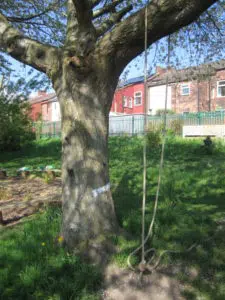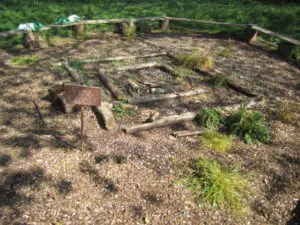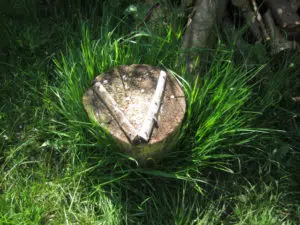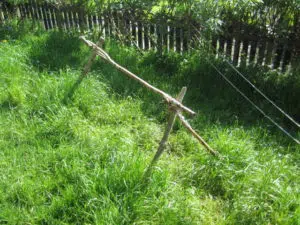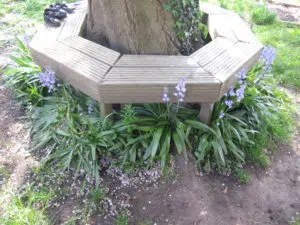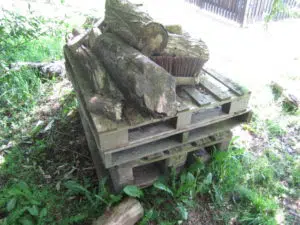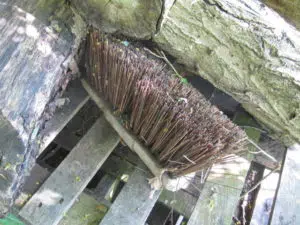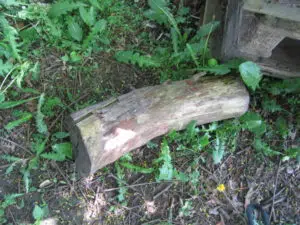What is Forest School?
One of the current positive trends in education at the moment is the increasing popularity of Forest Schools.
This brand of learning has a fantastically wide range of benefits. It is the type of learning that many of us try introduce to our own kids on family days out and holidays: making dams, climbing trees, building fires. The sort of thing that everyone believes we all used to do when we were young, but children have for some reason stopped doing in the modern day.
In a nutshell, forest school is an educational system that is now close to a hundred years old. First developed in America, it first really popularity in the 1950s in Scandinavia, and it has spread from there to Britain in more recent times.
In the forest school philosophy, children interact with a natural landscape and each other to learn social and technical skills. There is a big focus on developing confidence, self-esteem and independence.
What are the key skills that it promotes?
Many, although not all, of the key skills developed by forest school can be linked to personal and social development. The main skill-sets are probably the following:
- Discipline
- Self-awareness
- Empathy
- A positive mental attitude
- Self-esteem
- Teamwork
- Independence
- Confidence

What are its other benefits?
Its other main benefits are the following:
- Children learn how to live a healthy lifestyle
- They form excellent relationships with others
- They develop their speaking and communication skills at an accelerated rate
- They learn to manage risks (check out the many benefits of risky play here)
- They learn about the environment
- They understand features of nature
But what does Forest School look like in practice? And what kind of activities will children be expected to be doing? Read on to find out.
The main activities
1. Transitional Art Pits
These look a bit like digging garden plots. It is basically a square or rectangle of soil. Arrange some baskets of natural objects next the square – loose parts items such as stones, sticks, pine cones, leaves etc (To find a full list of my favorite 100 materials to use for loose parts play then check this article out.)
I find transitional art in the real world requires quite a lot of modelling and adult-led direction to get going.
Without help, children simply haven’t the bank of ideas to draw on. Demonstrate how to make a range of pictures – characters are a good choice. Also, things like vehicles, rockets, houses – anything that really sparks the children’s attention.
Transitional art develops skills in many areas – imagination, communication and early literacy.
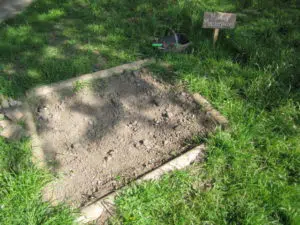
2. Hill slide
Such a simple activity this one, but one that really develops enjoyment, resilience and physical development.
All you need is some sort of slight slope in your setting.
Potentially this could be man-made, although this would be quite an investment of time and resources just for this activity. However, if you have a slope somewhere in your setting, then this simple activity is one that children enjoy repeating again and again.
In winter when the ground is really wet you can really get the children skidding and whizzing down the incline. When the ground is harder at other times of the year, it is more a case of rolling down the slope. Either way, good quality waterproof clothing is a must!
3. Rope Swing
An excellent simple activity that develops teamwork.
All you need is some sort of reasonably sturdy tree, and a strong rope. It makes sense to use the same tree each time, and the children start to associate that tree with the rope-swing.
Any boundaries and procedures you have introduced get more strongly enforced by familiarity to an area of the outdoor setting.
The adult will need to throw the rope over the tree branch.
One end of the rope has a wooden seat (a log) tied simply to it. One child sits on this seat, and then their friends try to pull them up!
You normally need a minimum of four children to do this, but sometimes it can take six to eight. It is like a tug of war, with hopefully the child on the seat being gradually lifted into the air.
When they are up, they can try and swing. You may see a painted line on the tree below: that was added as a reminder for the children to not let their feet go above that line.
Also, half the benefit of this activity is in the children recruiting a team to work together to pull on the rope. It requires negotiation and simple sales techniques to lure others away from their tasks.
4. Fire pit
This in one of the absolute highlights of forest school. It is also the one that requires the greatest awareness of health and safety.
One good procedure to get into the children’s heads is never to set foot in the middle of the fire-pit, whether there is a fire in it or not. Always walk around the outside!
Fire-pits introduce children to risky elements, e.g. fire! To find out many more examples of risky play take a look at this article.
The fire-pit in the picture below was set up by using pieces of decking balanced on logs for the benches. These are placed in a circle around the earth centre, with logs placed strategically in the middle to encase any fires.
The fire-pit can form the central social focal point of a forest school.
It is a place to sing songs, tell stories, and, most importantly, eat and drink. Classic snacks include marshmallows, corn-on-the-cob, burgers, and hot chocolate.
5. Cutting/chopping wood
This activity requires very careful supervision and prior risk assessment.
One simple way to do this is use a ‘billhook’. This is a smallish tool that looks a bit like a scythe with a handle at each end. It is also good to have a chopping board that looks a bit like the one in the picture below.
Place the piece of wood that you are going to cut on the board. A very small piece is definitely the best way to start. One child, or an adult, then holds the billhook on top of the piece of wood.
Using a mallet or piece of wood, the other child then hits the top of the billhook until the piece of wood splits.
Communication and listening between the two people involved in this activity is crucial. It is important to tell each other how many more hits, how hard and whether they need to stop.
6. Simple woodwork
This is a forest school activity that lots of people have anxiety about, but again it is just a case of having good supervision and a solid risk assessment, and you should be fine.
One of the simplest tools to begin using is a simple hand-drill. These can be used to create holes in wood. I have created mobiles made from natural materials before and the children really loved these. (You can find many more examples of forest school tools activities in this article).
Another tool that develops many skills is a simple handsaw. The key to this is using good-quality vices, and again a 1:1 level of supervision.
Hammers and nails can also be used. My children have really enjoyed making nail geoboards – nails hammered into small pieces of wood.
The children can then use the geoboards for fine motor exploration, placing bobbles, loom bands or rubber bands around the nails to create shapes and patterns. To find out the best activities you can do on a geoboard, then take a look at this article.
7. Den making
The classic way of creating these dens is to create an ‘A’ frame. This will require a bit of adult support with young children. Materials required are:
a.) robust branches/thick sticks
b.) string or thin rope
c.) Scissors
d.) A tarpaulin
e.) A heavy mallet
f.) Tent pegs
First, get the children to select or find two sticks of similar length.
Then get them to hammer them into the ground with a mallet, trying to get them into a capital ‘A’ shape. This is much easier in the winter when the ground is wetter and less resistant.
When they are hammered some way into the ground, cut pieces of string and loop it repeatedly around them securing them together.
Next repeat with another two equally sized branches, hammered into the ground a few paces away from the first two.
A longer branch across the top will now complete the frame and should also be tied securely with several pieces of string. Guide ropes can then be created: cut pieces of string, and tie one end to different parts of the frame. Then stretch them out so they are taut and secure them into the ground with tent-pegs. Last phase is to cover the completed A-frame with a tarpaulin.
This activity is fantastic for teamwork, cooperation, physical development and communication.
8. Communication Friendly Spaces
Forest schools provide a plethora of communication friendly spaces.
This idea has come from the work of Elizabeth Jarman. The way the environment is created and realised is central in promoting areas were children can develop their communication skills.
Forest areas provide cosy dens, and secluded shaded nooks. Even simple benches made from decking or logs create natural areas to take stock, and have informal or more focused chats with others.
9. Log Dogs
These a really simple but effective idea. You simply get logs and attach pieces of rope around them. The log acts as a ‘dog’ and the rope is a ‘lead’.
Not all children are excited by these, but I have seen those that are walk around with the dogs for a long time.
The dogs can begin to teach crucial life-skills. Caring for animals, for example.
We try to teach that you can’t just dump your log-dog. If you are going to try another task whilst walking with your log-dog, then you need to tie the dog’s lead somewhere so it is safe whilst you are busy.
They are also a good provocation for conversations – ‘What’s your dog called?’
10. Bug hotel
I think if you can create a bug hotel with the children then it creates a much greater value.
The basic idea is to get wooden pallets, and load them up with logs, sticks, compost, seeds, bits of old plants, and anything that will encourage mini-beasts.
Bug hotels do have a habit of drying out if just left alone, so occasionally reinvigorating the hotel is required.
I knew someone that used to cover her bug-hotel with grass seed, and she swore that this was the best way of getting it going again.
The more the children can be included in any of these processes the better. It gives them ownership, engagement, and is also a fantastic way of generating talk.
11. Items like old brushes to attract bugs
There are several different items that can be left lying around in the grass that are supposed to be great for attracting bugs. Old brush heads are one fantastic example of this.
12. Hunting for bugs under logs
There are also of course many naturally occurring places where bugs can be found. You can teach children how to look out for these, and how to investigate them. The moment of excitement when a mouldy piece of wood is turned over revealing hundreds of bugs is one that it is hard to beat.
13. Looking for signs of nature
Children immersed in a natural environment will naturally acquire a greater knowledge of life and its processes. Looking for nature generates ‘awe and wonder’ and heightened engagement with reality.
It also generates communication and understanding. Knowledgeable practitioners can really help in this area to develop children’s understanding.
14. Balancing and walking over natural obstacles
Risky play benefits children in a range of ways. It releases chemicals in the brain that are important for development. It also teaches children to know their limits, and also improve their confidence.
In forest schools children can try to climb up small trees. They can walk over logs. They can roll down hills or over the ground. They can swing on ropes, or holding onto to low branches.
If you’re looking for many more examples of outdoor loose parts play, then take a look at this article.
Conclusion
These are just some of the many types of learning experience possible in a forest school.
Outdoor environments of course lend themselves well to open-ended experiences, and activities and learning can take on a unique quality. Forest schools are fantastic for developing skills across the whole curriculum.
With a massive emphasis on resilience, communication, and physical development, they are one of the most ‘holistic’ approaches to education, and it is great to see them really flourishing in modern times.
If you’ve found this useful, then why not check out one of these articles:

